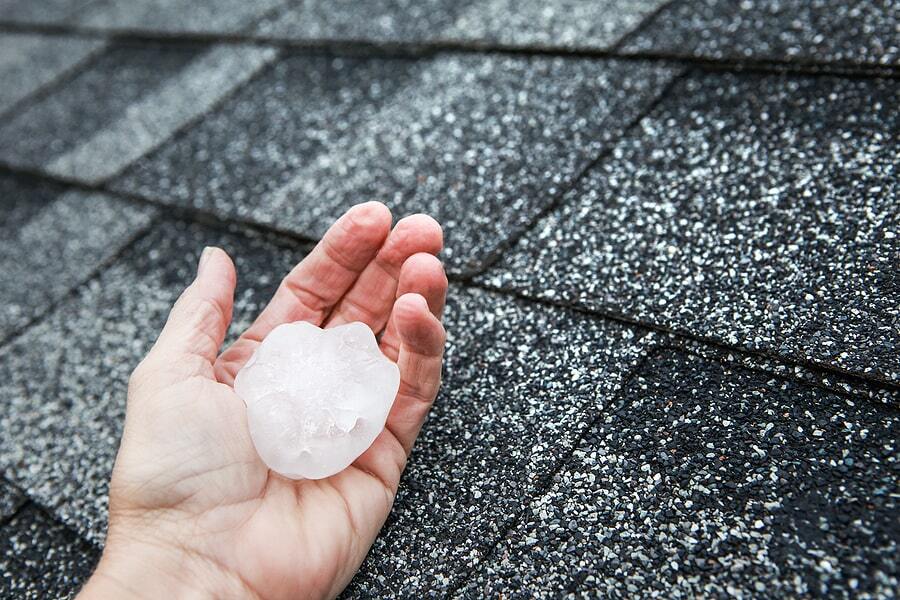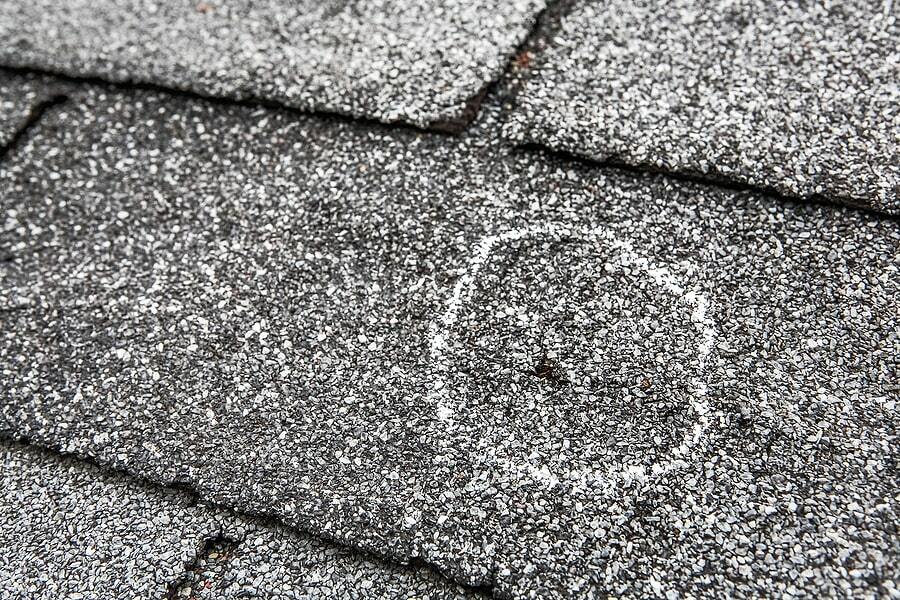Hail is one of the most volatile hazards that your roof can face. While you might be hard-pressed to remember the last hailstorm in your area, just one of these events over a dense population can “put a state in the record books for any given year,” says the insurance data analytics firm Verisk. One analysis shows that hail events damaged more than 7.1 million properties nationwide in 2019, costing just over $13 billion in insurance claims due to hail.

Over two days in April 2020 alone, large-size hail (more than 2 inches in diameter) struck Iowa, Illinois, Ohio, Michigan, Missouri, and Wisconsin—part of a severe weather pattern across the Ohio Valley and North Central states that caused roughly $2.9 billion in damages, according to the National Oceanic and Atmospheric Administration (NOAA).
In 2020 alone, NOAA Severe Storms database reports 4,611 major hailstorms in the U.S., causing damage to 6.2 million properties and $14.2 billion dollars in losses. Texas experienced the most hailstorms at 601, almost twice the number of storms experienced by the second and third states, South Dakota and Kansas, that experienced 377 and 341, respectively.
Your home’s roof should protect against hail, ice, rain, wind, and other storm damage. However, to an untrained eye, hail damage can appear to be cosmetic until roof leaks and other problems with the roofing system arise.
At Brava Roof Tile, we manufacture the best impact resistant roofing shingles. Our composite shingles are Class 4 Impact rated (withstand a 2-inch steel ball dropped repeatedly from a height of 20 feet) and can will withstand winds up to 188+ mph with ring shank nails. Read on to learn more about how your roof might be vulnerable to hail damage, and see why a Brava Roof is perfect for your home.
Why Does Hail Cause So Much Damage to a Roof?

Hailstones are essentially a ball of ice that forms when raindrops are caught in thunderstorm updrafts and freeze as they move upward into extremely cold areas. As they collide with liquid water drops that freeze on their surface, they grow into larger hailstones, and then fall to Earth when they become too heavy for the updraft to carry them.
Hail often falls directly down because it is too heavy for the wind to carry it, landing on and causing damage to roofs, cars, and other surfaces. In some cases, when winds are extremely strong, hail can fall and be pushed sideways, creating more damage to siding and windows, and even injuring people and animals.
Hail is a multi-faceted danger for roofs and the materials that protect them. In high winds, hail that is less than one inch in diameter can fall between 9 mph and 25 mph. Larger hailstones between two and four inches in diameter can fall at a rate of 44 mph, and up to 72 mph.
The size and density of the hailstones also affect how much damage they can cause. Depending on how they’re formed, hailstones will vary in size and density, and the larger, denser hailstones will cause more extensive damage than smaller, lighter hailstones.
Shape also impacts the way hail can damage a roof. While hailstones are often compared to perfectly round objects — peas, golf balls, grapefruits — in reality, they aren’t perfectly round, and their jagged edges can determine how much damage they cause.
Types of Roof Damage Hail Can Cause

If your roofing materials are old or unable to stand up to hail of a specific size and velocity, your roofing system could experience significant wind damage and, as a result, need additional repairs. If hail can dent aluminum siding or asphalt shingles, it can also be dense enough to crack shingles, leading to roof leaks and other roof repairs that are costly in the long run. What’s more, Verisk notes that a homeowner often doesn’t immediately notice hail damage, leading them to file a claim too long after the damage occurs. Some typical roofing hail damage includes:
- Shearing the granules off asphalt shingles, causing them to age faster
- Cracking shingles or shattering the surfacing, exposing the fiberglass mat underneath
- Fracturing or tearing the fiberglass mat
- Weakening the integrity of the seal around the shingles, causing leaks and neighboring shingles to tear
The Impacts of Hail Damage on Different Roofing Materials
When roofing materials are struck by hail, they can be damaged in a number of different ways depending on the type of material.
Asphalt shingles can have the asphalt granules sheared off which causes them to age faster. They can also be cracked or shattered which exposes the underlying materials to wind, rain, snow, ice, and sun. If the underlying fiberglass mat is torn, the roof deck will be exposed, giving moisture the opportunity to create leaks in the interior of the home.
Slate tiles are durable and can often withstand hail events, but they are prone to chipping and flaking over time, and exposure to hail will only exacerbate that tendency. If they become cracked or broken during a hailstorm, they should be replaced immediately to protect the underlying structure.
Clay barrel tiles are also very durable, but as with slate, they can chip, flake, or crack if they sustain impact from hail, especially if they haven’t been properly maintained or have become brittle over time.
Cedar shakes can also be damaged by hail that can puncture holes in the wood, exposing the underlying material to the elements. While cedar shakes can hold up well to hail, if they aren’t properly maintained, they can be vulnerable to moisture and may be easily split upon impact.
The Best Hail Proof Roofing Material

Brava Roof Tile’s Class 4 impact-resistant composite shingles guard against hail damage, which reduces your long-term roof maintenance costs. They also can prevent a premature roof replacement by keeping your roof strong and watertight.
To achieve the Class 4 Impact rating, a 2-inch steel ball is dropped onto the roofing material repeatedly from a height of 20 feet. If the material can withstand the impact multiple times, it is considered durable enough to withstand severe weather events such as high winds up to 188MPH with ring shank nails and up to 211MPH with high wind screw installation and hail.

Rated at the highest national standard for impact-resistant roofing materials, these shingles can withstand the force of steel balls that simulate hailstones falling at 90 mph. But they’re as attractive as they are durable. They mimic the aesthetics of a cedar shake roof, slate, and barrel tile, so they blend seamlessly with a variety of architectural styles.
Contact Brava Roof Tile today to learn more, call (844) 290-4196 and talk with an experienced representative about how our top-notch roofing products can protect your home, your belongings, and your family.



